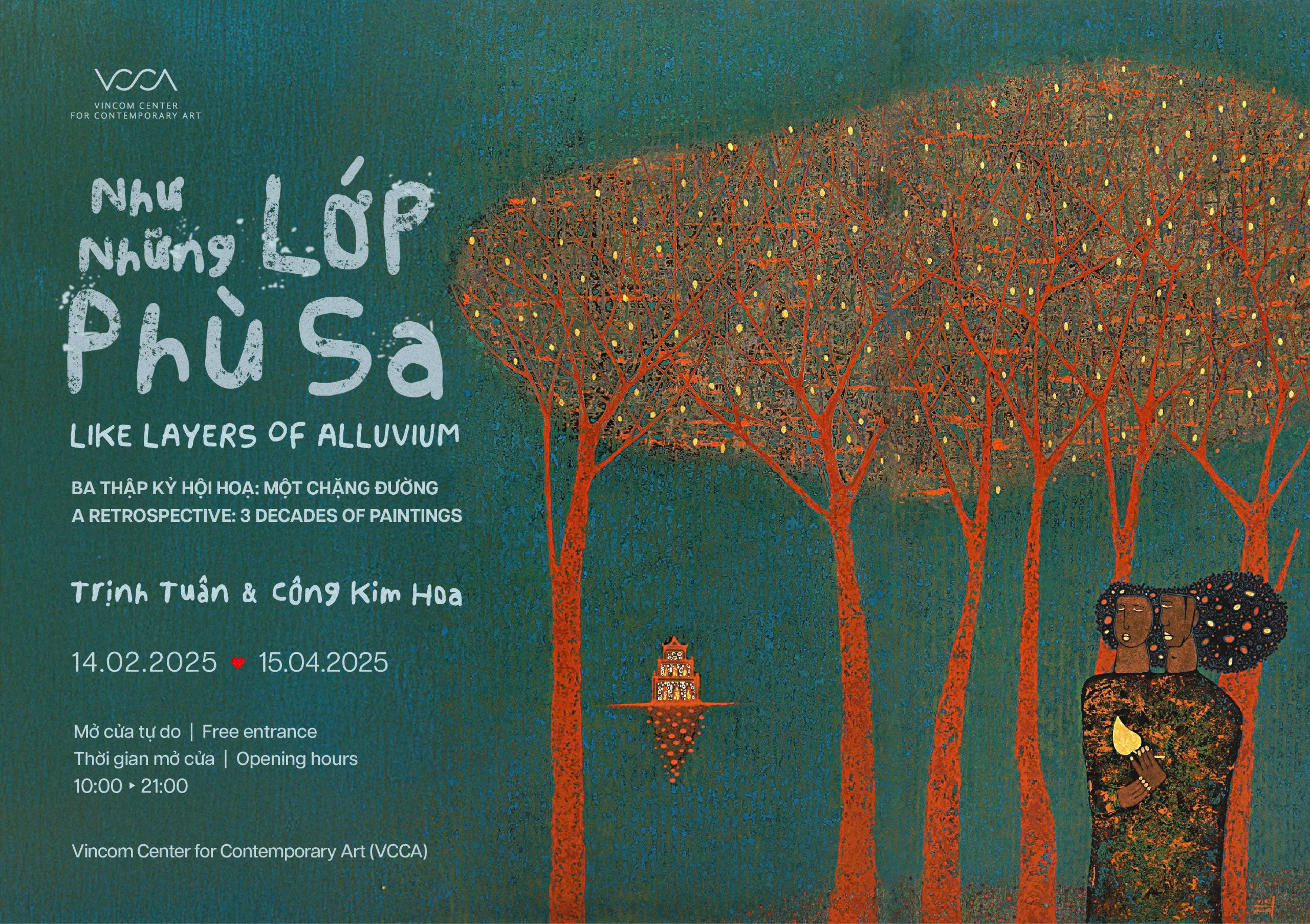
TUAN HOA’S LACQUER - THE ALLUVIAL LAYERS OF ART
I vividly remember those distant days. The crisp early spring air following the warm-hearted Tet festival of the subsidy period, when I visited the home of Trinh Tuan – Cong Kim Hoa at 17 Ly Quoc Su, Hanoi. Seeing them already soaked in lacquer, tirelessly polishing their paintings, and applying silver leaf. Sipping tea with artisan Bach from To Tich Street, who had been the first mentor to the artist couple. I listened as he shared the hardships and joys of the long-standing traditional lacquer craft. Those conversations deepened my admiration for my two dear friends’ dedication and passion.
Tuan and Hoa’s journey to Lacquer was a destined one, built upon a solid foundation of design knowledge from the very beginning. As colleagues, both graduated from a university specializing in applied arts. And both were taught the principles of Bauhaus design by German professors, during rare courses held in Vietnam in the early 1990s. Yet, their journey was also truly a self-driven endeavor of khai sơn phá vóc – learning from peers, seeking guidance from friends, studying books, reflecting during each visit to traditional craft villages. Contemplating through specialized seminars and expeditions abroad, to explore the latest advancements in international lacquer art. They constantly question: What has Vietnamese and international lacquer art achieved, and where is it headed?
Proficient in the principles of modern art, and instructed by masters such as Victor Tardieu, Inguimberty, Alix Aymé, since the founding of École des Beaux-Arts de l’Indochine around a century ago. Tuan and Hoa also deeply understand, through personal experience, that Vietnamese lacquer painting still require many distinctive traditional skills, including coating (phủ), curing/incubating (ủ), sanding (mài), and polishing (toát). These techniques are highly tactile. A form of engagement, significantly different from brush-based practices of painting.
The acts of touching (chạm), rubbing (xoa), stroking (vuốt), and pressing (miết) one's hand on the surface of an artwork repeatedly. Meticulously inspecting every brushstroke, every layer of lacquer. Applying mordant (mẩu cẩn) and gilding leaf (miếng dát), painstakingly sanding little by little. Watching every step, until reaching a certain stopping point - all demonstrate a ripeness of proximity and empathy between the artist and the viewers. The making of lacquer paintings clearly demands delicate physical contact, as an intimate gesture, as a multilateral relationship between the creators, the medium, and the material. The tenderness and affection in the artist’s every movement is truly inspiring, subconsciously radiating love. Inflecting upon the viewers, an innate urge to caress the face of the artworks.
Tuan and Hoa’s lacquer art not only embodies the unique essence of the ancestral craft, seamlessly integrating the spirit of modern art and design, but also echoes their philosophies as seasoned artists and master artisans.
Always by each other’s side, sharing a deep passion for traditional art. With relentless ambitions to explore and create something uniquely their own, all while contributing to the evolution of Vietnamese lacquer art. Tuan and Hoa’s devotion to their craft is increasingly recognized and honored.
International exhibitions in Japan, China, the United States, France, Denmark, the Netherlands, Germany, Australia, Singapore, Argentina, Malaysia, Israel, Thailand, Taiwan, Mongolia, and numerous domestic events since the 1990s, have introduced the art of Trinh Tuan and Cong Kim Hoa to a wide audience and the global art community across five continents.
Profoundly well-rounded in the traditional lacquer craft of his ancestors, and confidently incorporating modern techniques and materials, Trinh Tuan has established himself as a distinguished lacquer master. Renowned for his expressive, lyrical, and symbolically rich idiosyncrasy. Today, he stands as a leading figure in lacquer painting, with many successful students and disciples.
With a refined color palette and a unique approach to abstraction – imbued with the grace and character of a true Hanoian – Cong Kim Hoa has long been recognized as one of Vietnam’s foremost female lacquer artists, representing the country’s lacquer art at international exhibitions and art forums.
Nearly three decades have passed since that spring morning, yet the Hanoi artist couple remain abundant with creative energy.
Surely, there is much more to be said of their love for one another and for art. Traversing such a long journey together, nurturing and incubating (hom ủ) the art of lacquer, yet, each possess a distinct visual language from one another.
While Cong Kim Hoa dedicated her career to creating in her family’s art studio and passionately teaching children to paint. Trinh Tuan found himself in a broad social and artistic scope: a design professor at university, a lacquer master at his studio, a member of an international lacquer history research project, a curator, and an organizer of professional international art events. He holds a strong reputation across regions and continents.
Against all odds, the two artists have maintained harmony between their inner world and social life. They remain unwavering in pursuing both realms of consciousness: shaping contemporary visual concepts, while preserving the essence of traditional craftsmanship. Naturally, their artistic endeavors have fostered profound connections, inspiring generations of students and international friends.
With a spirit of artistic creativity, rigorous craftsmanship, and relentless accumulation of knowledge, after nearly a third of a century, the lacquer painting of Trinh Tuan - Cong Kim Hoa has become like layers of fertile alluvium, continuously enriching the treasure of Vietnamese arts and culture every day.
Hanoi, Spring of Wood Snake year, 2025
Phạm Long

